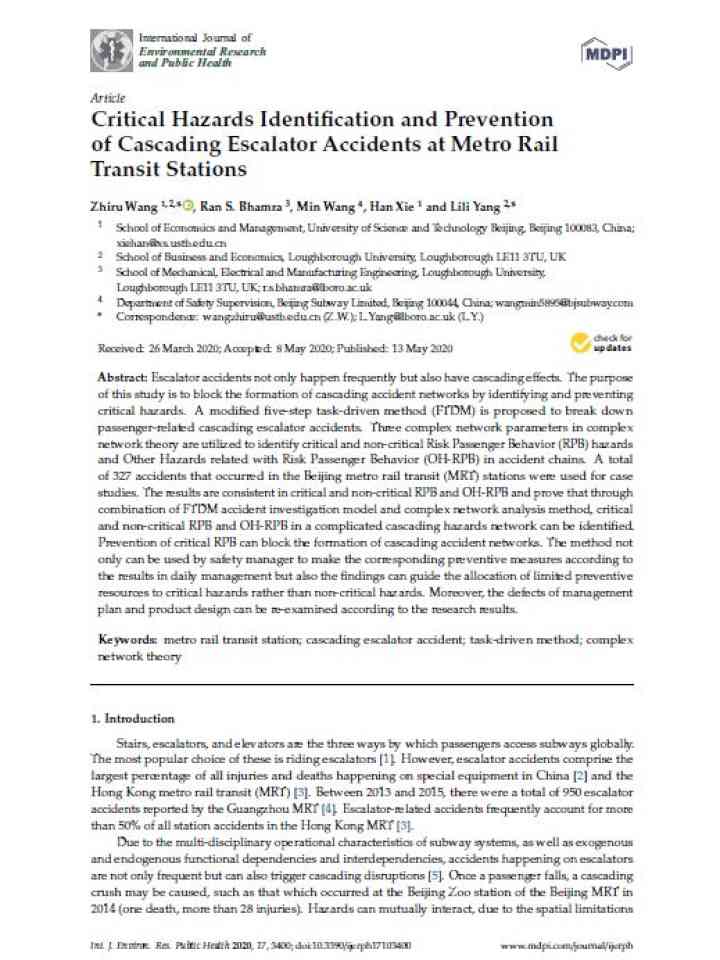Review of analyses on crowd-gathering risk and its evaluation methods
The purpose of this study is to block the formation of cascading accident networks by identifying and preventing critical hazards. Escalator accidents not only happen frequently but also have cascading effects. A modified five-step task-driven method (FTDM) is proposed to break down passenger-related cascading escalator accidents. Three complex network parameters in complex network theory are utilized to identify critical and non-critical Risk Passenger Behavior (RPB) hazards and Other Hazards related with Risk Passenger Behavior (OH-RPB) in accident chains. A total of 327 accidents that occurred in the Beijing metro rail transit (MRT) stations were used for case studies.
The results are consistent in critical and non-critical RPB and OH-RPB and prove that through combination of FTDM accident investigation model and complex network analysis method, critical and non-critical RPB and OH-RPB in a complicated cascading hazards network can be identified. Prevention of critical RPB can block the formation of cascading accident networks. The method not only can be used by safety manager to make the corresponding preventive measures according to the results in daily management but also the findings can guide the allocation of limited preventive resources to critical hazards rather than non-critical hazards. Moreover, the defects of management plan and product design can be re-examined according to the research results.
Explore further
